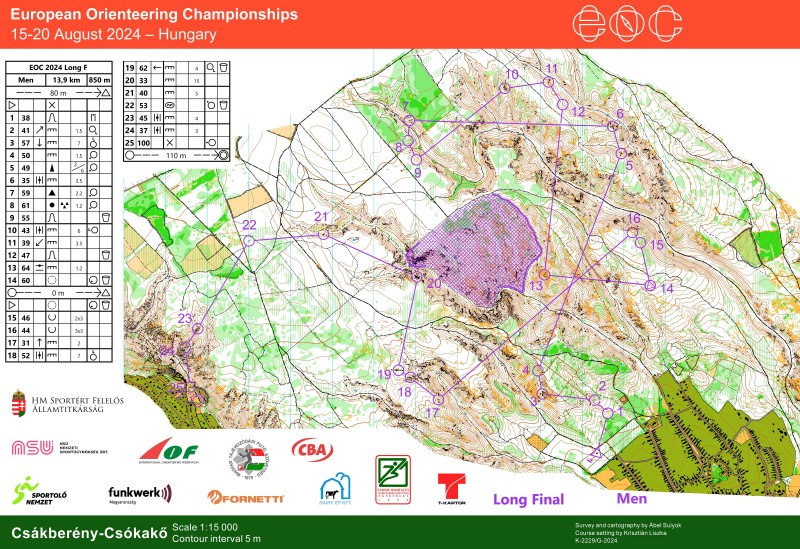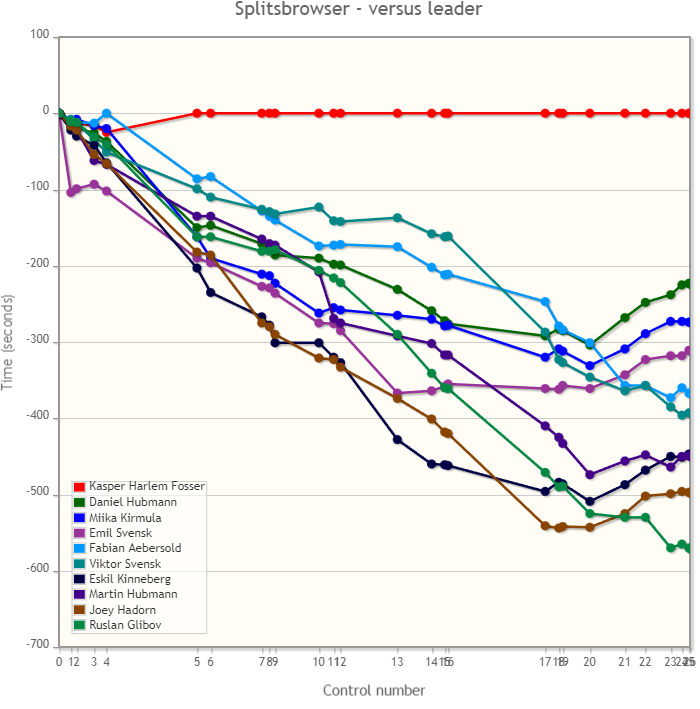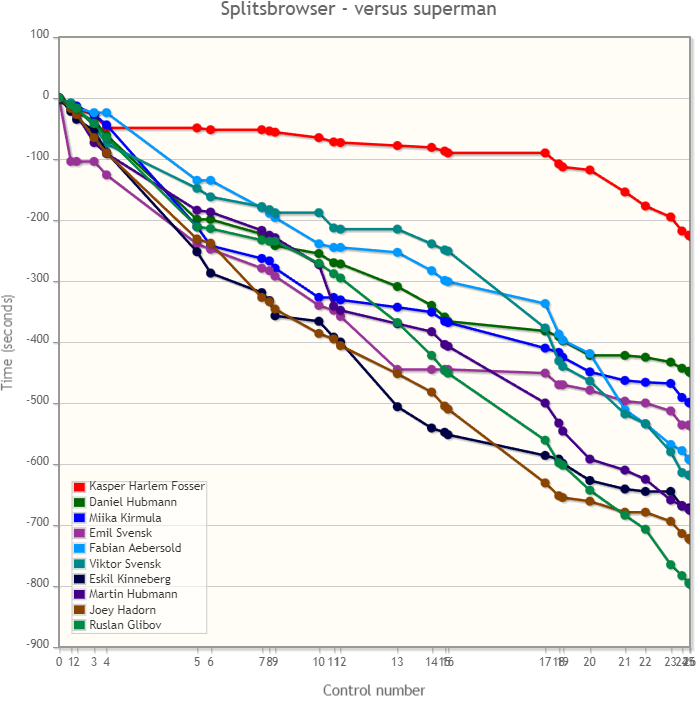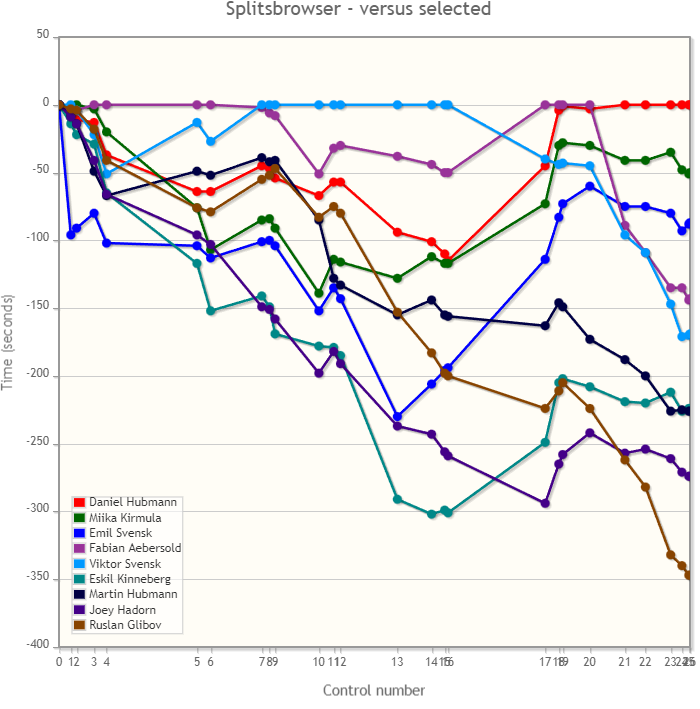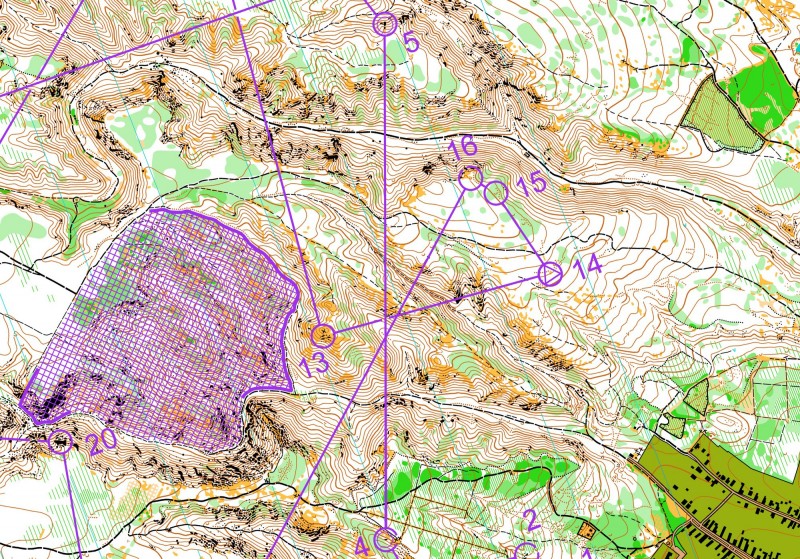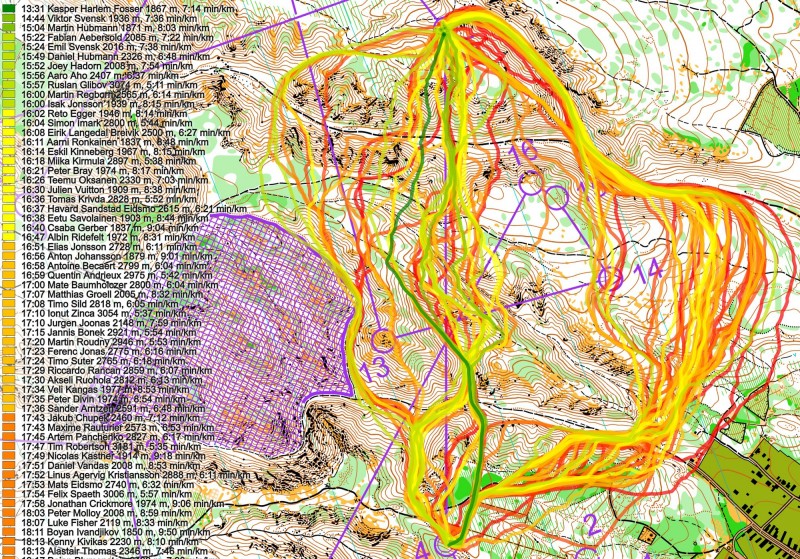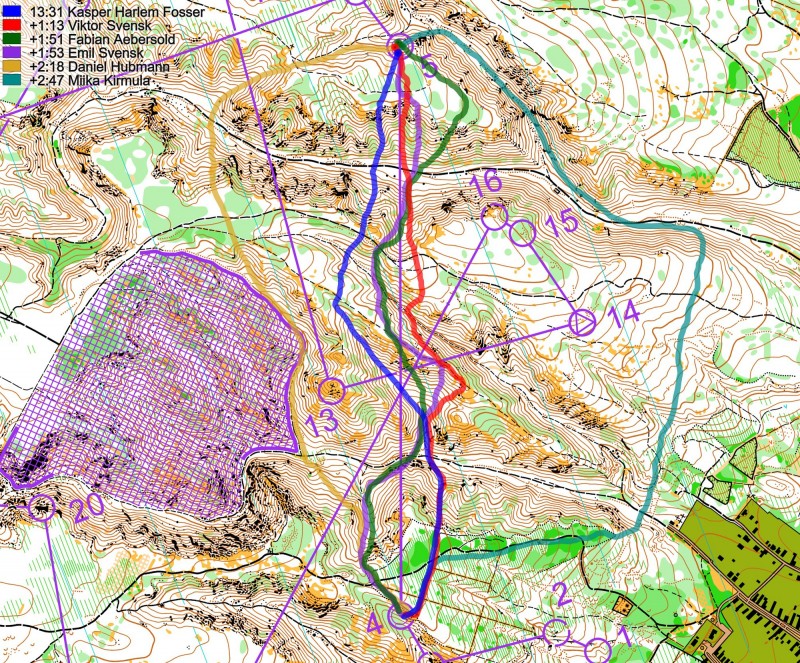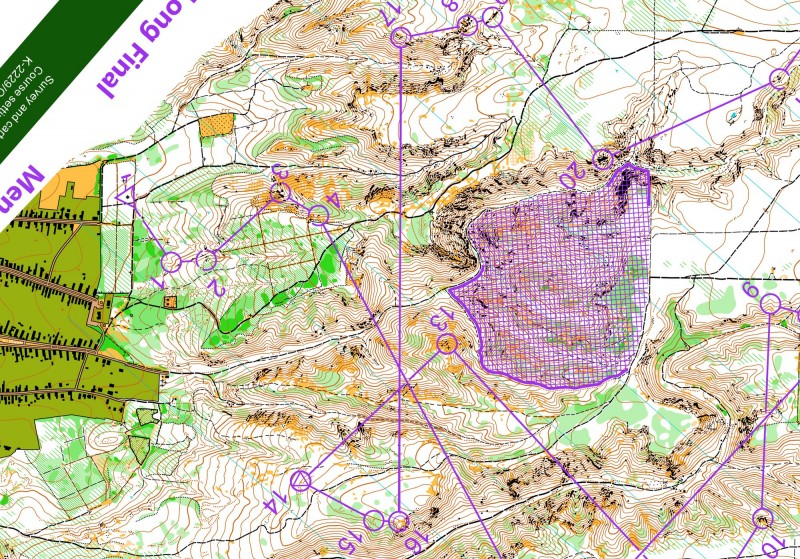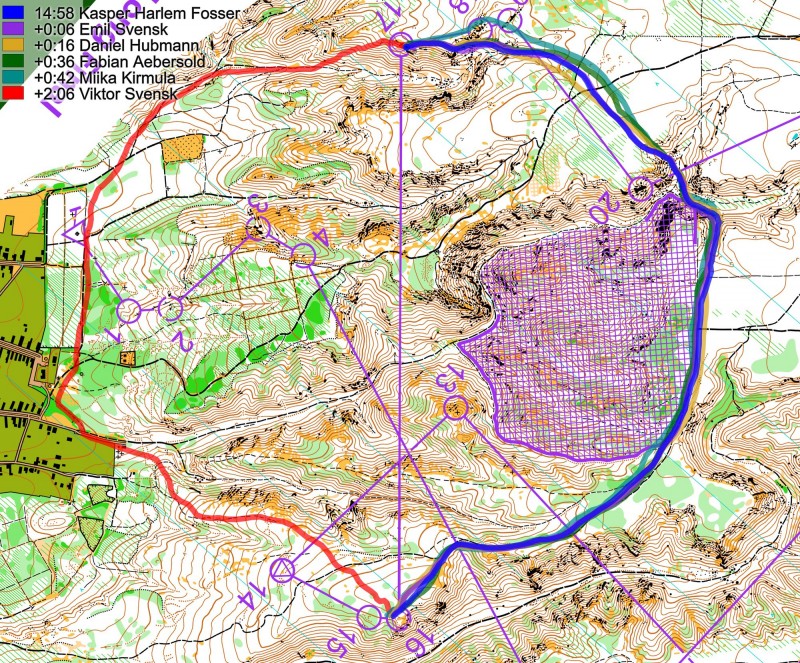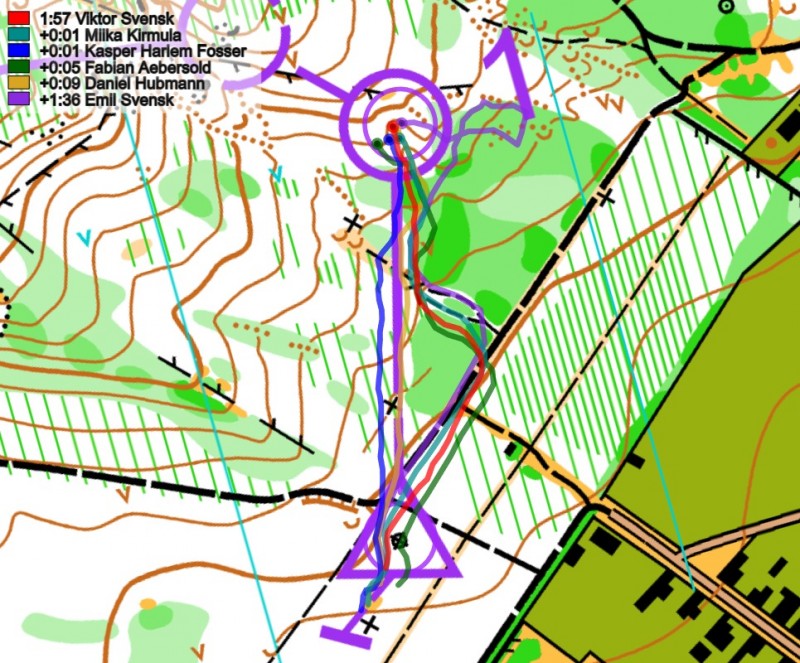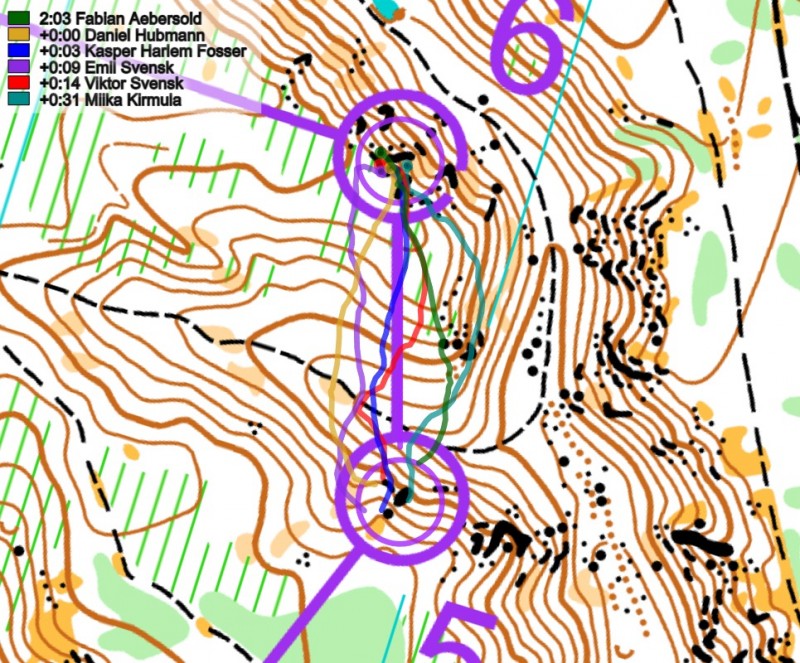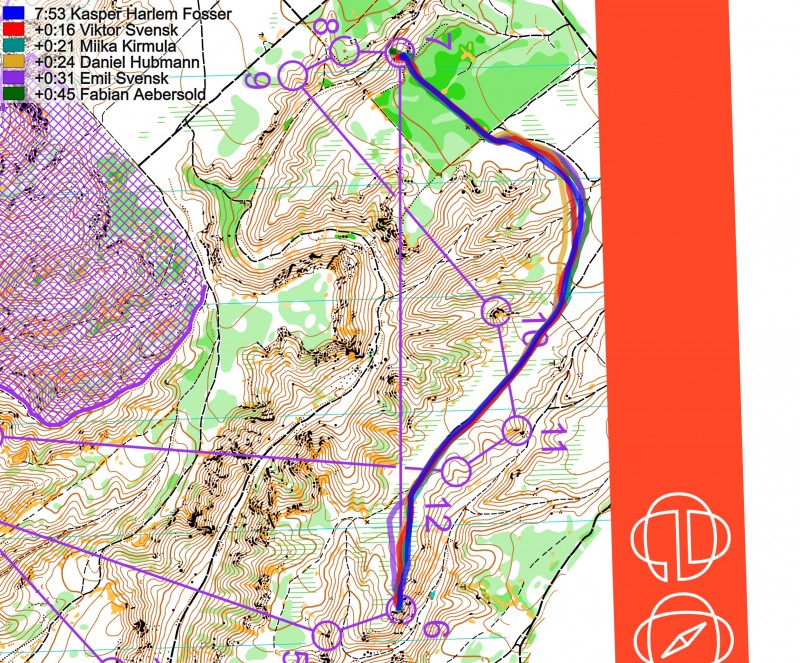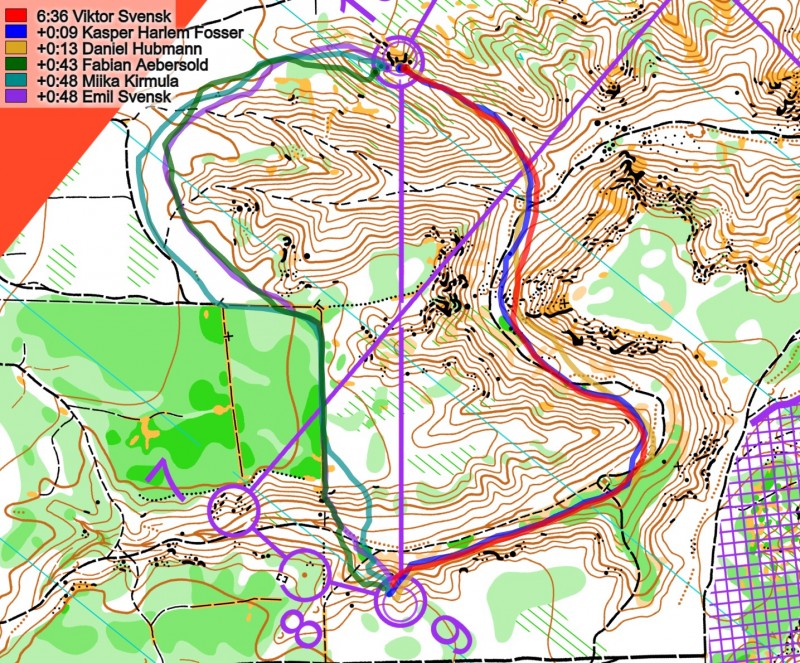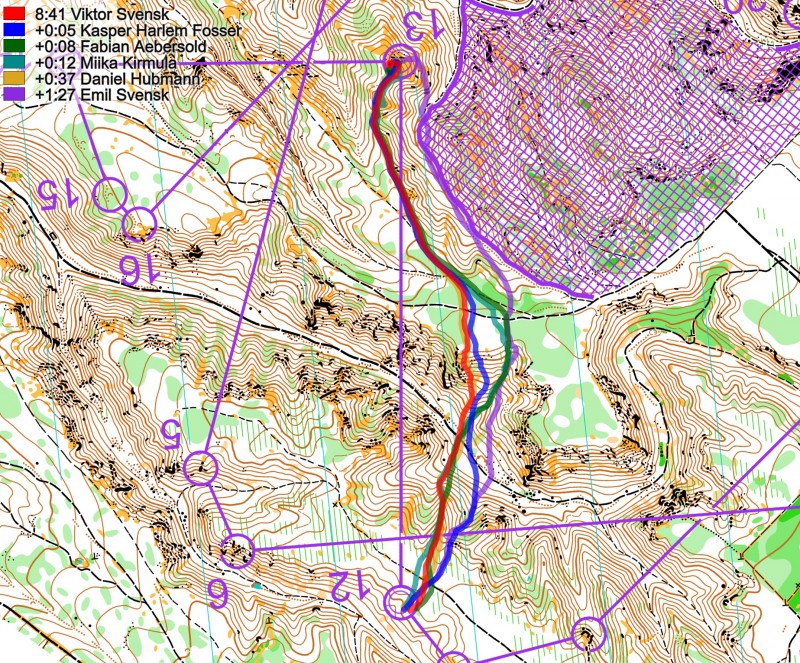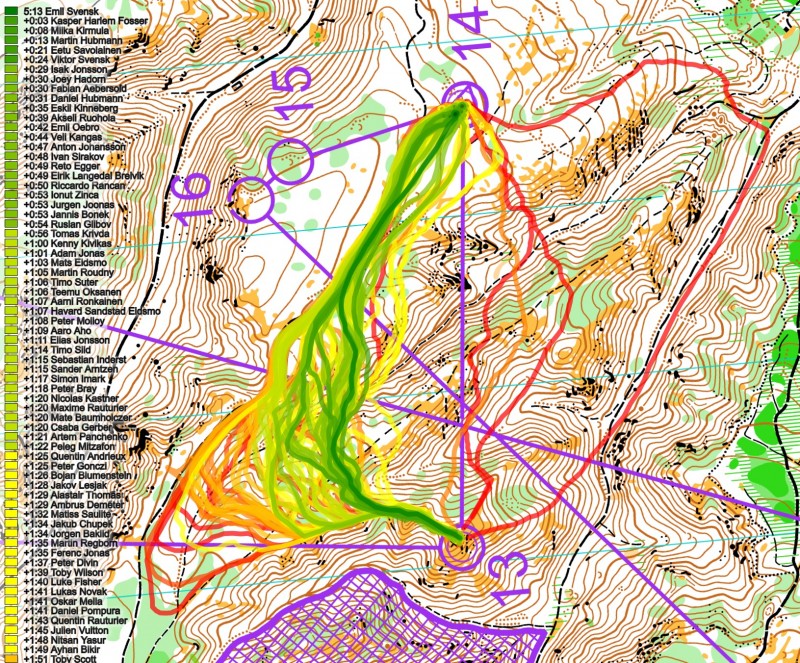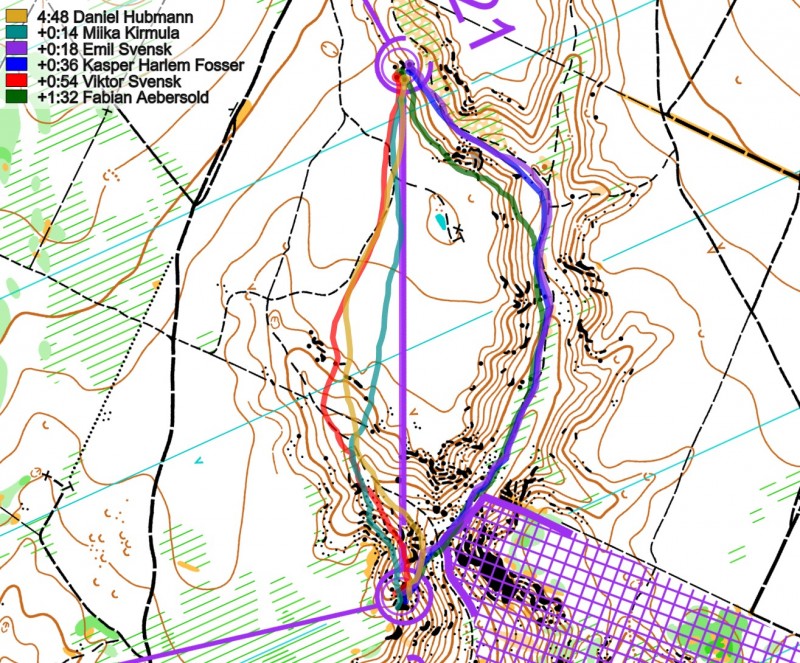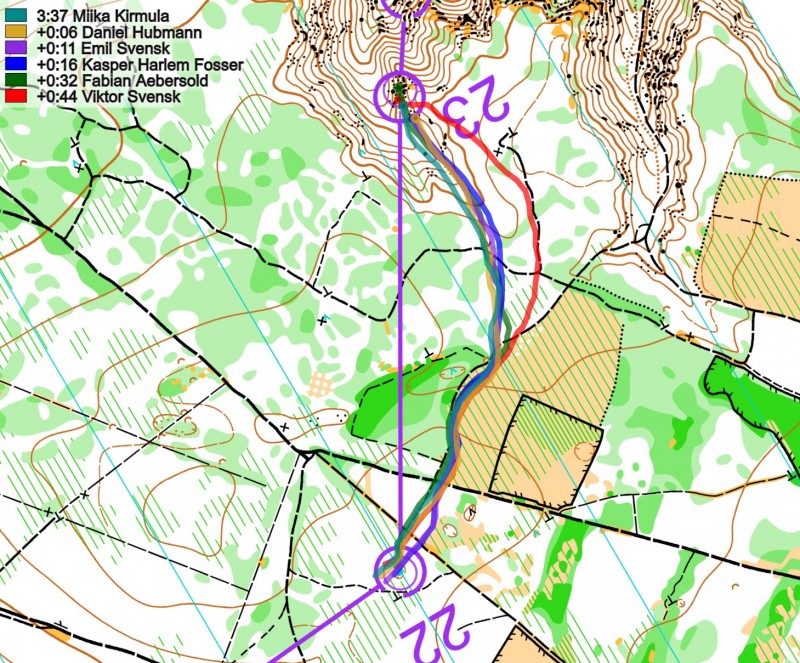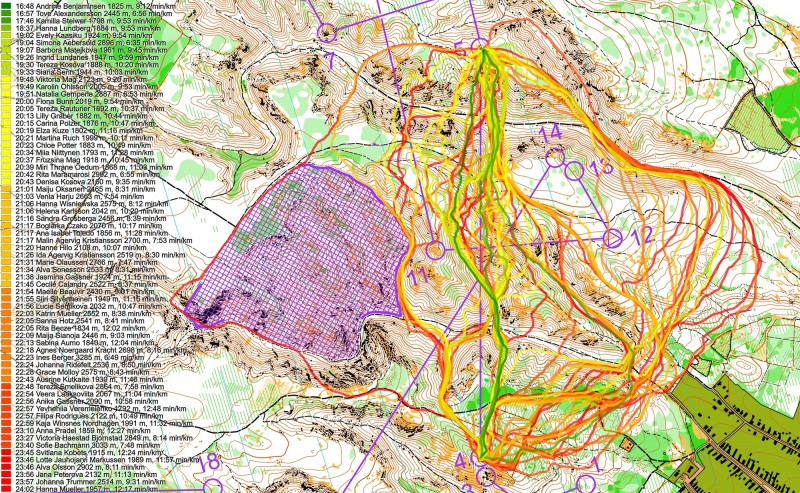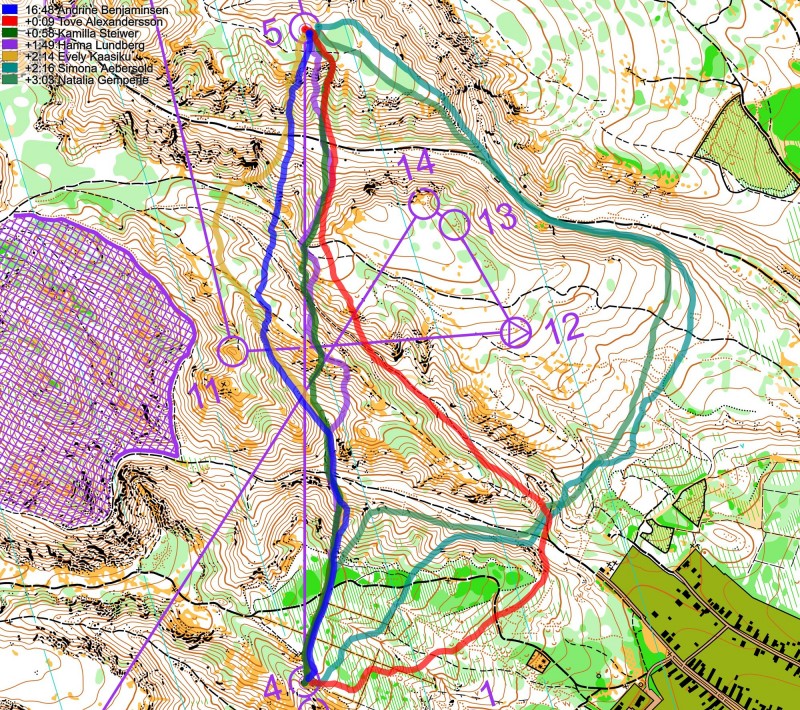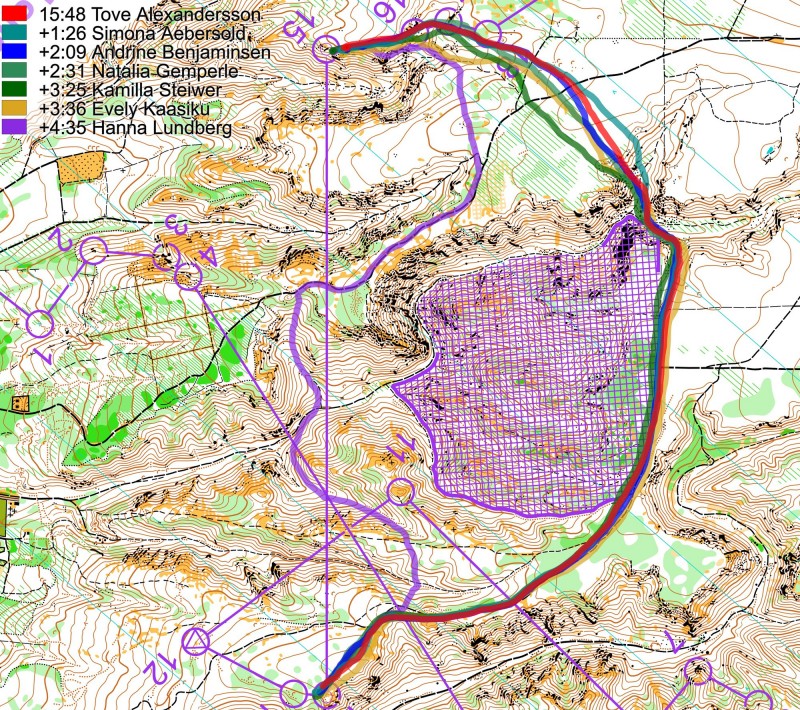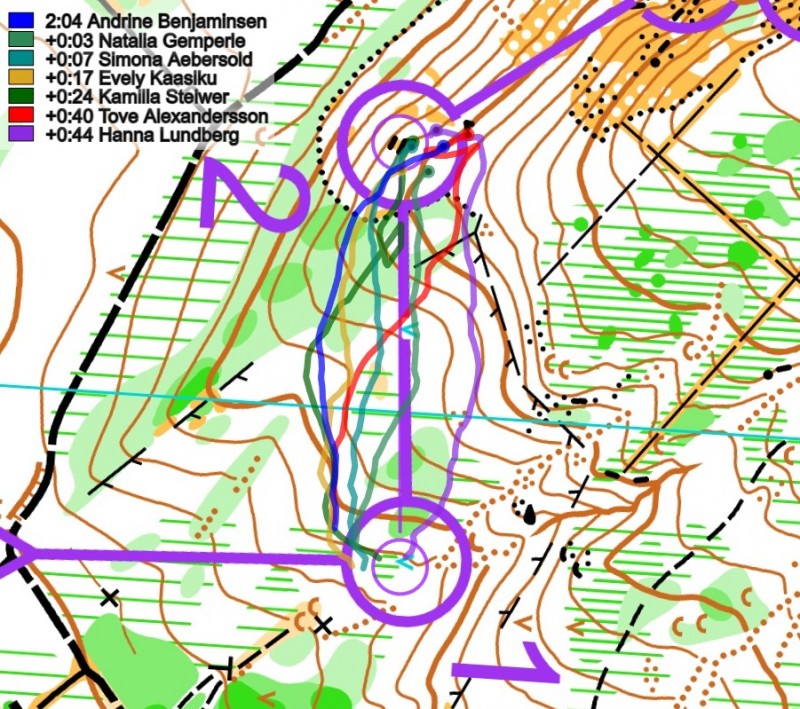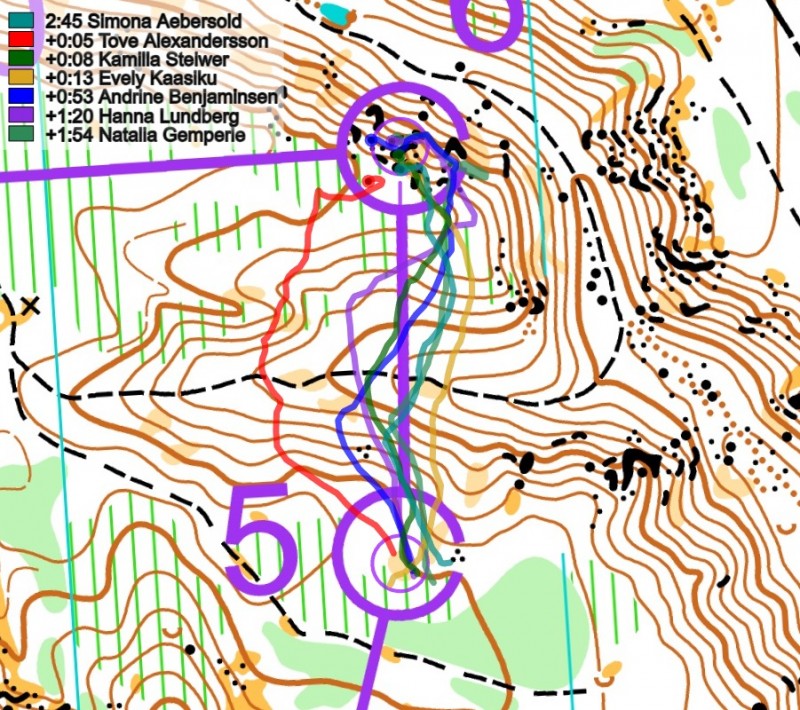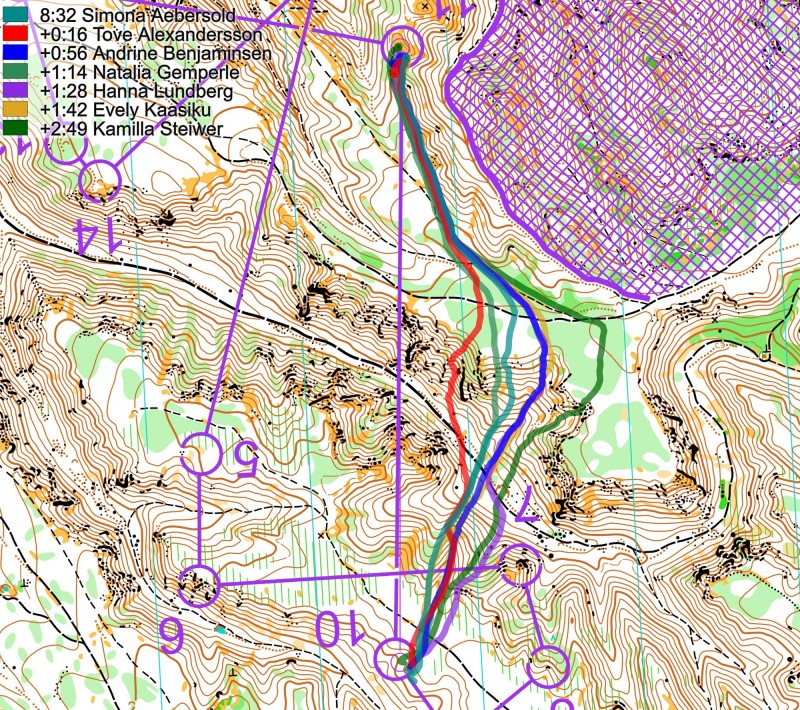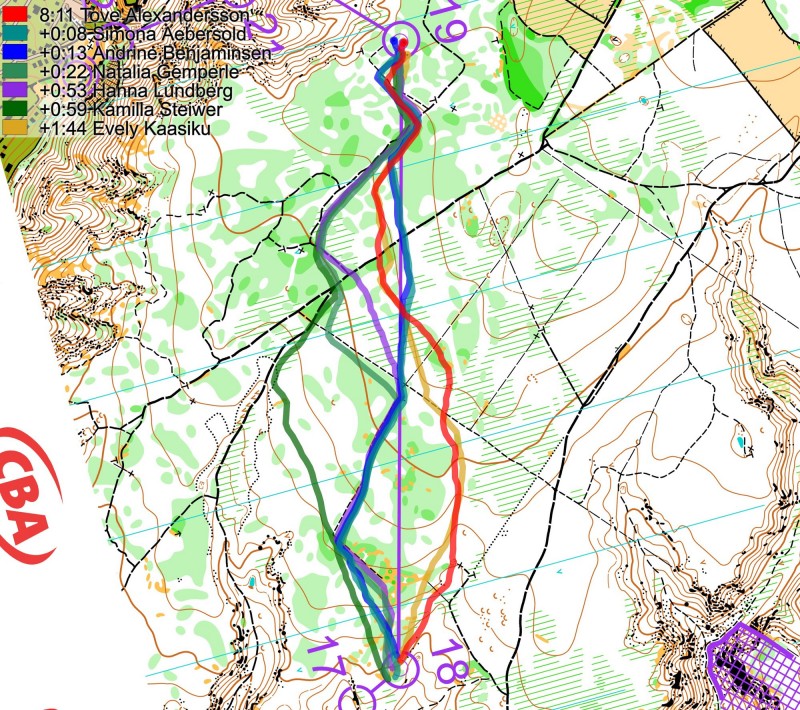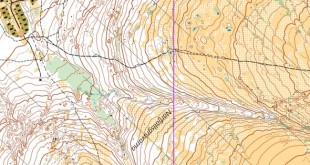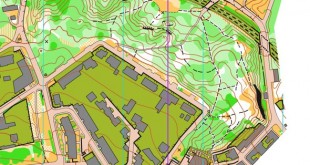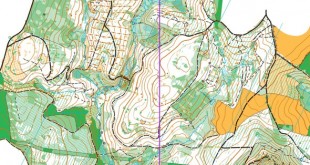The big favourites Kasper Fosser (Norway) and Tove Alexandersson (Sweden) took clear victories at the European Orienteering Championships (EOC) Long distance in Hungary – both with a margin of around 4 minutes to their closest competitors.
In the men’s class Daniel Hubmann (Switzerland) took an impressive silver medal – 18 years after he took his first EOC medal at the EOC Long distance in Estonia in 2006. Miika Kirmula (Finland) took the bronze medal after a strong last half of the course. In the women’s class the EOC Middle winner Simona Aebersold (Switzerland) took the silver medal ahead of the bronze medalist from the Middle, Andrine Benjaminsen (Norway).
Both Aebersold and Benjaminsen were caught by Alexandersson, but running in groups did not seem to influence the results a lot in the women’s class due to the very large time differences. In the men’s class there were more runners running in groups – of the medalists Kirmula might have got some help from Eskil Kinneberg (Norway) – and Fosser might have got some help from Emil Svensk and the other runner he caught (although he already had a very large lead, and did not even manage to keep up with Svensk).
See maps, GPS-tracking and results below the analysis.
Analysis Men
Below you can see a graphical representation of the race development in the men’s class for the Top 10. As you can see, Fosser was in a completely different class than his competitors until around the 20th control. From there several runners ran faster than him, but the Norwegian’s gap was more than large enough.
Looking at the comparison with “superman” (the best time on each leg is flat), it is clear that Fosser was not far off the superman-speed all the way to the 17th control. Especially his gap to the others on the long leg to the 5th control is impressive, but generally all lines fall off steeply for most of the race…
To take a closer look at the battle for the other medals, we take Fosser out of the comparison. Five runners where in the real battle for the medals:
- Fabian Aebersold (Switzerland). Leading the battle for silver until control 6. Two bad controls lost him the medal chances; a miss to control 10 and a larger miss to control 21.
- Viktor Svensk (Sweden). Svensk was in second place until control 16, but took the wrong routechoice to control 17 (around to the left) – a very physically tough route choice which cost him all power – after that he never came back into the race.
- Daniel Hubmann (Switzerland). Hubmann was a bit behind in the first part of the race, but run an excellent last part of the race, securing silver there.
- Miika Kirmula (Finland). Lost a lot of time in the start, especially on the long leg to control 5, but as Hubmann he had a very good last part of the race, securing bronze there.
- Emil Svensk (Sweden). Svensk lost nearly 2 minutes already to the first control – more than he was off the medals – and had also a very bad leg to control 13.
- In addition Max Peter Bejmer (Sweden) did a very good race, but was disqualified as he took one of the women’s controls instead of his own.
Here we take a look at some of the key legs. The most interesting leg was the leg to control 5, also shared by the women.
Running a route quite straight, making sure you found a way where you did not climb too much, was clearly the fastest here – while you could lose quite some time by running to the right like Kirmula (lost 3 minutes to Fosser, 1:30 to other top runners). Fosser did something special physically here, winning the leg with 1:13 to Viktor Svensk.
The other interesting leg was the leg to control 17:
This leg was maybe a bit of a disappointment as it felt quite clear that running to the right would be fast with low risk. Still, the course setter managed to trick a few runners into taking another route choice (Viktor Svensk will not be too happy about that) – but with this interesting terrain more could have been possible ….
Finally we have added the legs where top runners lost time – notably the first control where Emil Svensk lost 1:36 to his brother Viktor.
Analysis Women
Below you can see a graphical representation of the race development in the women’s class for the Top 10. In the women’s race the battle for the medals was decided very early – with Tove Alexandersson catching Simone Aebersold, Andrine Benjaminsen and Natalia Gemperle (3, 6, 9 and 12 minutes) after around 60 minutes of running. The gaps between the best runners were huge, and running speed decided the race more than anything else (this was definitely a risk when extending the winning time in the long distance in the women’s class to 90 minutes).
Looking at the “superman” type plot shows how fast Alexandersson was today – not far off superman – all the way to the finish.
Here the battle between the top 4. Gemperle and Aebersold took the wrong route to control 5 (and Alexandersson did also not run perfectly here). Gemperle would have been quite close to Benjaminsen if taking the correct routechoice here.
The women’s course was quite similar to the men’s course – the long leg to the 5th control being equal.
Looking at the top runners, Benjaminsen was fastest, with a similar route to Fosser. Alexandersson did not take a good routechoice, but was still only 9 seconds behind. Aebersold and Gemperle both ran much too far around to the right (you actually get just as much climb here as straight, while running a lot longer), losing 2 and 3 minutes, respectively.
The second long leg was also the same – and again running to the right was clearly fastest. A few more women were tricked into running a straight variant (notably Hanna Lundberg who lost nearly 5 minutes), but also here most took the fastest routechoice to the right.
Also here we take a look at selected legs where top runners lost significant time:
Maps and GPS-tracking
See the map from the men’s course at the top of the page and the map from the women’s course below. Click the thumbnails for GPS-tracking via omaps.worldofo.com.
A small personal note about GPS and the TV broadcast: For individual start long distance to be a TV sport (and to survive as a discipline in the championships in the long run), the TV broadcast must become a lot better, showing the excitement all the way from start to finish. In this year’s long distance we did not see or hear more than 6-7 seconds of the top runners the first hour when all the excitement happened (following Fosser’s first hour vs his competitors on the GPS was very exciting) – almost everything was already decided among the late starters the first time we saw the runners on TV. And we did also not get to see the excitement in the battle for the medals in the men’s class (following the medal battle between Hubmann, Kirmula and Aebersold on the GPS was a thriller, but only for those following the GPS themselves).
EOC 2024 | Long Final | Women

» See map in omaps.worldofo.com
EOC 2024 | Long Final | Men

» See map in omaps.worldofo.com
Results
Men
| 1 | Kasper Harlem Fosser | 1:37:13 | 7:00 | ||
| 2 | Daniel Hubmann | 1:40:57 | +3:43 | 7:16 | |
| 3 | Miika Kirmula | 1:41:47 | +4:33 | 7:20 | |
| 4 | Emil Svensk | 1:42:24 | +5:10 | 7:22 | |
| 5 | Fabian Aebersold | 1:43:20 | +6:06 | 7:27 | |
| 6 | Viktor Svensk | 1:43:46 | +6:32 | 7:28 | |
| 7 | Eskil Kinneberg | 1:44:41 | +7:27 | 7:32 | |
| 8 | Martin Hubmann | 1:44:43 | +7:29 | 7:32 | |
| 9 | Joey Hadorn | 1:45:31 | +8:18 | 7:36 | |
| 10 | Ruslan Glibov | 1:46:44 | +9:30 | 7:41 | |
| 11 | Isak Jonsson | 1:46:49 | +9:35 | 7:42 | |
| 12 | Martin Regborn | 1:47:08 | +9:54 | 7:43 | |
| 13 | Albin Ridefelt | 1:47:53 | +10:39 | 7:46 | |
| 14 | Eetu Savolainen | 1:49:11 | +11:57 | 7:52 | |
| 15 | Jannis Bonek | 1:49:44 | +12:30 | 7:54 | |
| 16 | Riccardo Rancan | 1:50:36 | +13:22 | 7:58 | |
| 17 | Simon Imark | 1:51:16 | +14:02 | 8:01 | |
| 18 | Eirik Langedal Breivik | 1:51:35 | +14:21 | 8:02 | |
| 19 | Akseli Ruohola | 1:51:39 | +14:25 | 8:02 | |
| 20 | Timo Sild | 1:51:43 | +14:29 | 8:03 |
Women
| 1 | Tove Alexandersson | 1:25:43 | 7:57 | ||
| 2 | Simona Aebersold | 1:29:47 | +4:04 | 8:19 | |
| 3 | Andrine Benjaminsen | 1:32:34 | +6:51 | 8:35 | |
| 4 | Natalia Gemperle | 1:37:05 | +11:22 | 9:00 | |
| 5 | Evely Kaasiku | 1:39:55 | +14:12 | 9:16 | |
| 6 | Kamilla Steiwer | 1:40:05 | +14:22 | 9:17 | |
| 7 | Marie Olaussen | 1:41:33 | +15:50 | 9:25 | |
| 8 | Venla Harju | 1:41:39 | +15:56 | 9:25 | |
| 9 | Hanna Lundberg | 1:41:46 | +16:03 | 9:26 | |
| 10 | Miia Niittynen | 1:42:55 | +17:12 | 9:32 | |
| 11 | Ingrid Lundanes | 1:43:05 | +17:22 | 9:33 | |
| 12 | Johanna Ridefelt | 1:43:36 | +17:53 | 9:36 | |
| 13 | Tereza Rauturier | 1:43:55 | +18:12 | 9:38 | |
| 14 | Maija Sianoja | 1:44:46 | +19:03 | 9:43 | |
| 15 | Miri Thrane Oedum | 1:45:48 | +20:05 | 9:48 | |
| 16 | Alva Sonesson | 1:46:17 | +20:34 | 9:51 | |
| 17 | Cecile Calandry | 1:46:40 | +20:57 | 9:53 | |
| 18 | Sanna Hotz | 1:46:52 | +21:09 | 9:54 | |
| 19 | Denisa Kosova | 1:47:45 | +22:02 | 9:59 | |
| 20 | Victoria Haestad Bjornstad | 1:47:55 | +22:12 | 10:00 |
 World of O News
World of O News

